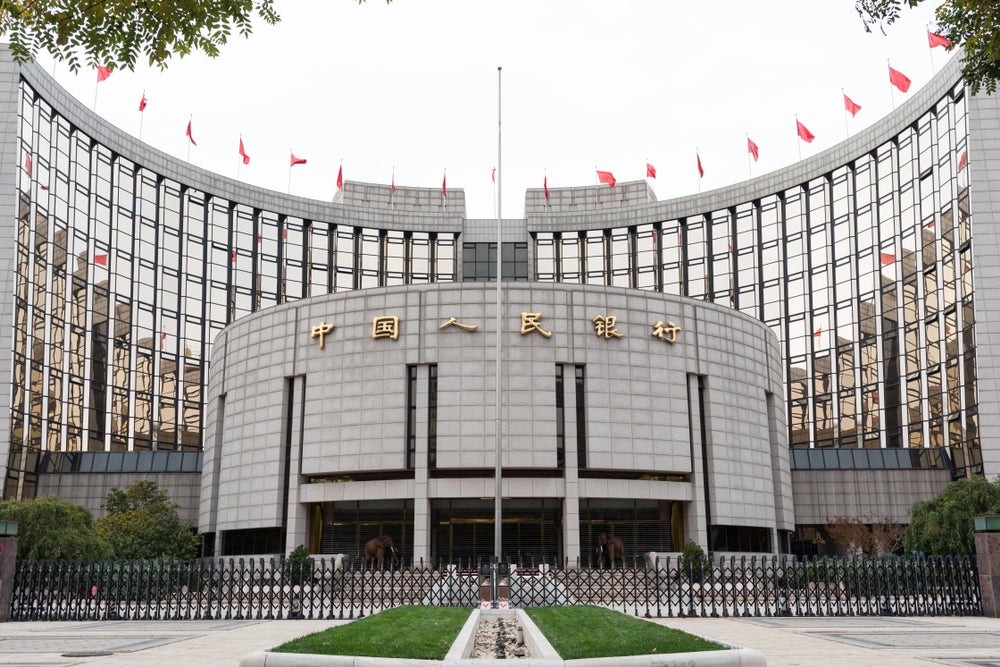Chinese stocks soared on Tuesday following an unexpected and substantial monetary stimulus from the People’s Bank of China (PBoC).
The central bank announced cuts to the reserve requirement ratio (RRR) for banks and the seven-day repo rate, just a day after lowering the 14-day reverse repo rate.
People’s Bank of China Implements Aggressive Monetary Easing
The PBoC Governor, Pan Gongsheng, revealed a 50-basis-point cut to the bank’s reserve requirement ratio, reducing it from 10.0% to 9.5% for commercial banks.
This cut is set to inject approximately 1 trillion yuan ($140 billion) of liquidity into the banking system, allowing banks more capital to lend.
In addition to the RRR cut, Pan also announced a 0.5 percentage point reduction in existing mortgage rates, offering relief to the struggling property market.
The seven-day repo rate was slashed by 20 basis points to 1.5%, while the 14-day reverse repo rate, already lowered on Monday, saw a 10-basis-point reduction to 1.85%. These moves are seen as a clear signal that Chinese policymakers are increasingly focused on addressing the economic slowdown.
Analysts Praise PBoC’s Moves
“The rare simultaneous cut of policy rates and the RRR, the relatively large magnitude of cuts, and unusual guidance on another 25-50 basis point RRR cut by the end of this year, indicated policymakers’ growing concerns over downside risks to domestic economic activity,” wrote Xinquan Chen, an economist at Goldman Sachs, in a note.
While these monetary measures point to a more proactive stance from the Chinese government, Chen warned that more fiscal stimulus will be required to bolster domestic demand.
Goldman Sachs expects another 25-basis-point RRR cut in the fourth quarter of 2024, along with further reductions in 2025. The bank forecasts two additional 25-basis-point RRR cuts in the first and third quarters of 2025, as well as two 10-basis-point policy rate cuts in the second and fourth quarters.
ING Group commented that markets had initially anticipated smaller 10-basis-point cuts, making the 20-basis-point reduction more aggressive than expected. However, they cautioned that the long-term impact would depend on whether the PBoC continues with more cuts or adopts a “wait-and-see” approach following the current measures.
“We feel today’s measures are a step in the right direction, especially as multiple policies were announced together rather than spaced out piecemeal. We continue to believe that there is room for further easing in the months ahead, as most global central banks are now on a rate-cut trajectory,” ING’s China chief economist Lynn Song said.
Market Reactions: Chinese Stocks, ETFs Rally
The Hang Seng Index jumped 4.13% on Tuesday, closing at 19,000.56 — the highest level since May.
U.S.-listed ETFs investing in Chinese equities also rallied strongly in premarket trading. The iShares MSCI Hong Kong Index Fund EWH was up 2%.
The Chinese yuan appreciated 0.3%, reaching its strongest levels since May.
Major U.S.-listed ETFs focused on China also surged ahead of the market open. The KraneShares CSI China Internet ETF KWEB jumped 5.6%, the iShares China Large-Cap ETF FXI climbed 5.4%, and the iShares MSCI China ETF MCHI rose 5.3%.
Chinese companies listed on U.S. exchanges also saw significant premarket gains.
Chinese EV-maker Li Auto Inc. LI surged 8%, while NIO Inc. NIO gained 7%. JD.com Inc. JD rose 7.1%, and Alibaba Group Holdings Ltd BABA, China's largest publicly traded company with a market capitalization of $209 billion, climbed 5.4%.
Read now:
Photo: Shan_shan/Shutterstock.com
© 2024 Benzinga.com. Benzinga does not provide investment advice. All rights reserved.








